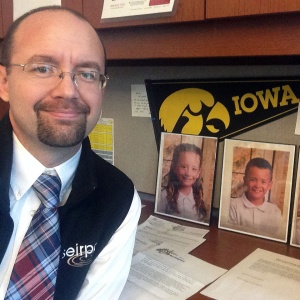
As executive director of the Southeast Iowa Regional Planning Commission (SEIRPC), Mike Norris advises cities and counties in a four-county region on transportation planning, economic development, and finance issues.
SEIRPC is not a large enough to allow its employees to specialize in one aspect of planning. That suits Norris’ diverse skill set, gained as a graduate student in the University of Iowa’s School of Urban and Regional Planning (SURP), just fine.
“SURP offered a broad curriculum, so I can apply what I learned and encountered at SURP in my daily work life here at SEIRPC,” says Norris, who earned his master’s degree at the UI in 2003.
The Southeast Iowa Regional Planning Commission, which serves approximately 107,000 citizens, focuses on providing excellent service through planning, program management, technical assistance, grant writing, and regional collaboration. SEIRPC exists to provide services to the governments, residents, and businesses of Des Moines, Henry, Lee, and Louisa counties.
According to SEIRPC’s annual report, in 2015, the organization secured nearly $12 million from outside grant sources. This is a 142:1 return on investment from member dues. In 2015, 156 individual housing units were positively affected either though new construction, rehabilitation, or down payment assistance.
Norris takes great pride in SEIRPC’s accomplishments.
“I am most proud of helping keep SEIRPC relevant to the region in changing areas of need to maximize our service and usefulness,” Norris says.
As a graduate student, Norris learned it’s not only the work he does, but how he approaches it that makes him effective.
Norris believes that many times the simplest approach is the best approach.
“I employ the Golden Rule to the best of my ability every day — treat others how you would wish to be treated,” Norris says. “This is the basis for all our relationships and projects. At SEIRPC, we measure issues, programs, and projects against our purpose — serving southeast Iowa. Through this lens we often see more clearly what it is we are supposed to accomplish and how to do it.”
